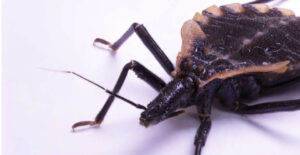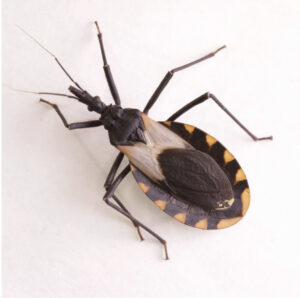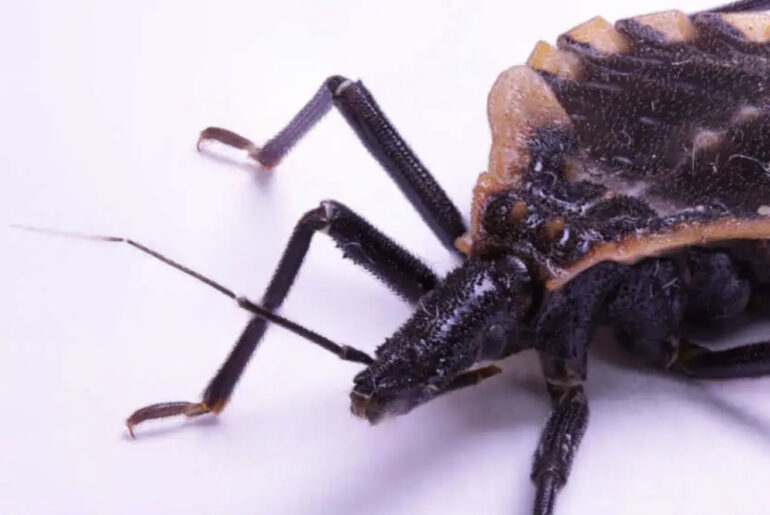Chagas disease, triggered by the parasite Trypanosoma cruzi, poses a grave health threat to millions globally. Its primary mode of transmission occurs when individuals come into contact with the feces of blood-feeding insects referred to as kissing bugs. These insects frequently take refuge in inadequately constructed residences, particularly in rural regions. Upon biting a person, these insects deposit their excrement in close proximity to the bite site. If an individual unintentionally rubs the excrement into the bite, eyes, or mouth, the parasite gains entry into the body. Regrettably, Chagas disease symptoms might remain dormant for a considerable period, ranging from 10 to 30 years, contributing to a significant number of undetected instances.

Chagas disease is often referred to as a “quiet and suppressed ailment” due to its ability to inflict severe cardiac harm in roughly one-third of infected individuals, which can ultimately result in heart failure or sudden demise. Additionally, around 10% of those afflicted may encounter abnormal enlargement of the colon or esophagus. Shockingly, Chagas disease is responsible for approximately 12,000 fatalities each year, earning it the title of the most lethal parasitic disease in Latin America, surpassing even malaria in its toll on human lives.
Uncovering Chagas Disease: Its Historical Significance and Global Reach
Unearthed by the Brazilian physician Carlos Ribeiro Justiniano Chagas back in 1909, this affliction spans across 21 Latin American nations and has even made its presence known in North America, Europe, Japan, and Australia. Despite its wide-ranging impact, Chagas disease remains largely unfamiliar to healthcare professionals and the general populace, despite the World Health Organization (WHO) setting a target for its eradication by 2030, highlighting the gravity of this often underestimated tropical ailment.
A major obstacle in accessing treatment and halting further transmission lies in the remarkably low case detection rate, which is estimated to be just around 10%. Presently, a mere 30% of Chagas disease cases receive accurate diagnosis, leaving approximately 75 million individuals worldwide susceptible to the illness.
Addressing Treatment Difficulties: Managing Chagas Disease Medications
The leading drugs used to treat Chagas disease include benznidazole and nifurtimox. Nonetheless, these medications, originating from more than half a century ago, can result in significant adverse reactions, particularly among adults. It is imperative to initiate the administration of these drugs promptly after infection to ensure their effectiveness. While these drugs may hold the potential to cure infected infants, their efficacy in treating adults is less definite, although they can assist in impeding the disease’s advancement. Regrettably, experts like Professor David Moore, a consultant at the Hospital for Tropical Diseases in London, regard these medications as “toxic, disagreeable, and relatively ineffective.”
The absence of financial motivations has dissuaded pharmaceutical firms from venturing into fresh drug research, contributing to the complexities surrounding Chagas treatment. Endeavors such as the Chagas hub are dedicated to enhancing testing, treatment, and risk mitigation, with a particular focus on vulnerable populations such as expectant mothers.

Charting the Way Ahead: Tackling Chagas Disease
Despite the unwavering dedication of researchers and healthcare professionals, headway in combatting Chagas disease has been gradual. The persistent COVID-19 pandemic has compounded the obstacles in terms of diagnosis and treatment, rendering the WHO’s aim of eradicating the disease by 2030 a substantial challenge. Professor Moore expresses doubts regarding the feasibility of achieving this objective, given the limited attention given to addressing a neglected tropical ailment like Chagas.
However, endeavors such as the Chagas hub have achieved advancements in screening and identifying individuals in danger, with aspirations of broadening screening initiatives, particularly in healthcare facilities catering to Latin American communities. Simultaneously, in the realm of eco-epidemiology, where intricate links between ecology, environment, and human and animal well-being are explored, continuous investigations into Chagas disease and kissing bugs are striving to deepen our comprehension of disease transmission. These efforts aim to formulate efficient preventive measures for the protection of both humans and animals.
To sum up, Chagas disease, transmitted through kissing bugs, presents a substantial worldwide health dilemma. Despite its widespread impact on millions, it largely exists in obscurity and is often neglected. There is an immediate demand for fresh treatments and strategies, but financial constraints are impeding advancement. Nevertheless, resolute healthcare providers, researchers, and community efforts are persistently laboring to enhance detection, treatment, and prevention. By amplifying awareness and tackling access issues, we aspire to achieve significant progress in eradicating Chagas disease and safeguarding vulnerable communities from this concealed and disregarded menace.




